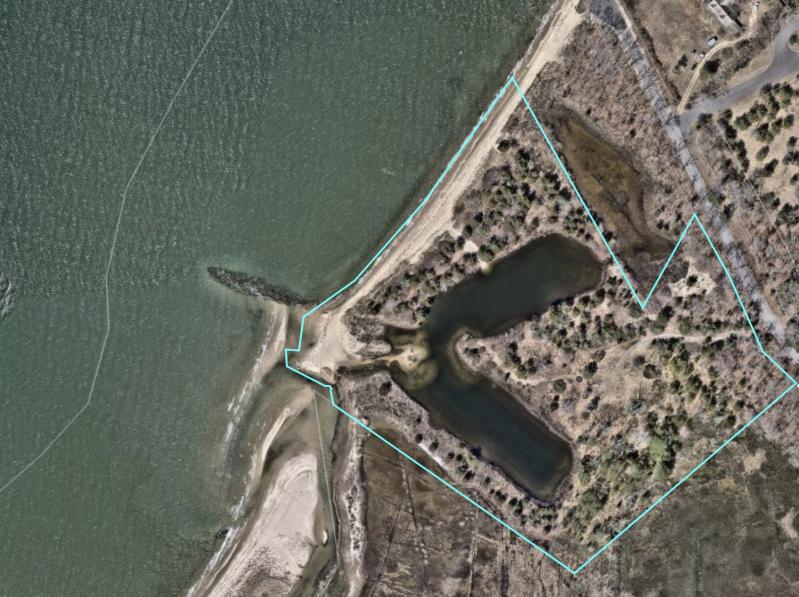“We actually lived off the land. We didn’t have electricity until I was 12. We had cows, steer, pigs. I milked the cows,” said Larry Koncelik, speaking at a public hearing before the East Hampton Town Board on the proposed purchase of a 9.35-acre parcel at 43 Mile Hill Road, along Northwest Harbor.
Mr. Koncelik was raised just up the road, from the spot, which the town hopes to buy using $16 million from its community preservation fund.
He, along with seven other residents who spoke at the hearing, supported the purchase. However, he had opinions on how the land should be managed, and has formed a group called the High Barberry Alliance, which he said contained nearly 40 people who supported his views.
He offered some of the land’s colorful history.
He recalled seeing a man named Ernie, one day in the 1950s, knee deep in the tidal stream with a shovel, mapping out a marina. By the 1960s, the wetlands were dredged, and two boat basins were created for the High Barberry Marina. However, Ernie also constructed a jetty that caused shoaling, and his marina struggled.
“I think he put that jetty on the wrong side because he had a hard time keeping that inlet deep enough,” said Mr. Koncelik.
Ernie gave up on the marina and became a mailman instead. In time, the inlet closed and the two boat basins now resemble ponds.
Mr. Koncelik guessed that the ponds had water quality issues. “They’re not being flushed out enough and the phragmites are overtaking that area,” he said.
To allow the aging boat basins to flow, he suggested installing a culvert or maintaining the inlet annually with a backhoe. He was against a parking area or designated trail, fearing crowding. “Parking in that area would make my little road ridiculously crowded.”
The High Barberry Alliance also listed littering, unauthorized parking, camping, beach parties, kayak storage, and erosion as its top concerns.
“According to rule nine of the 2022 management and stewardship plan, public access to the purchased land may be restricted when it poses a risk to the property or its natural resources,” Gaye Campbell-Koncelik told the board. With her husband, she suggested that public access be limited to foot traffic only.
Rick Whalen, a local attorney and trails advocate, also spoke in support of the purchase, noting that the parcel was surrounded by 66 acres of contiguous preserved area. He added that northeast of the property was a two-acre parcel at the end of Mile Hill Road. “The first land the Town of East Hampton ever purchased for open space, in 1956.”
“There’s lots of land that needs to be protected, and we are so fortunate to have the C.P.F. to do it, through 2050,” said John v.H. Halsey, the founder and president of the Peconic Land Trust. “Let’s not be bashful about spending the money to protect what’s important. You have to tailor public access to what you’re trying to protect. So go for it.”
Janet Schneider, an artist and “avid birder,” who lives nearby, said she had noticed a degradation of water quality since Covid. “There are many fewer birds,” she said. Like Mr. Koncelik, she advocated for the purchase along with a strong water management program.
Even David Buda, a resident of Springs who, moments before, at a separate public hearing, had told the board he would be fine with seeing two new 12,000-square-foot homes bordering Georgica Pond instead of a C.P.F. purchase at that location, supported the land buy.
The board closed the hearing.




